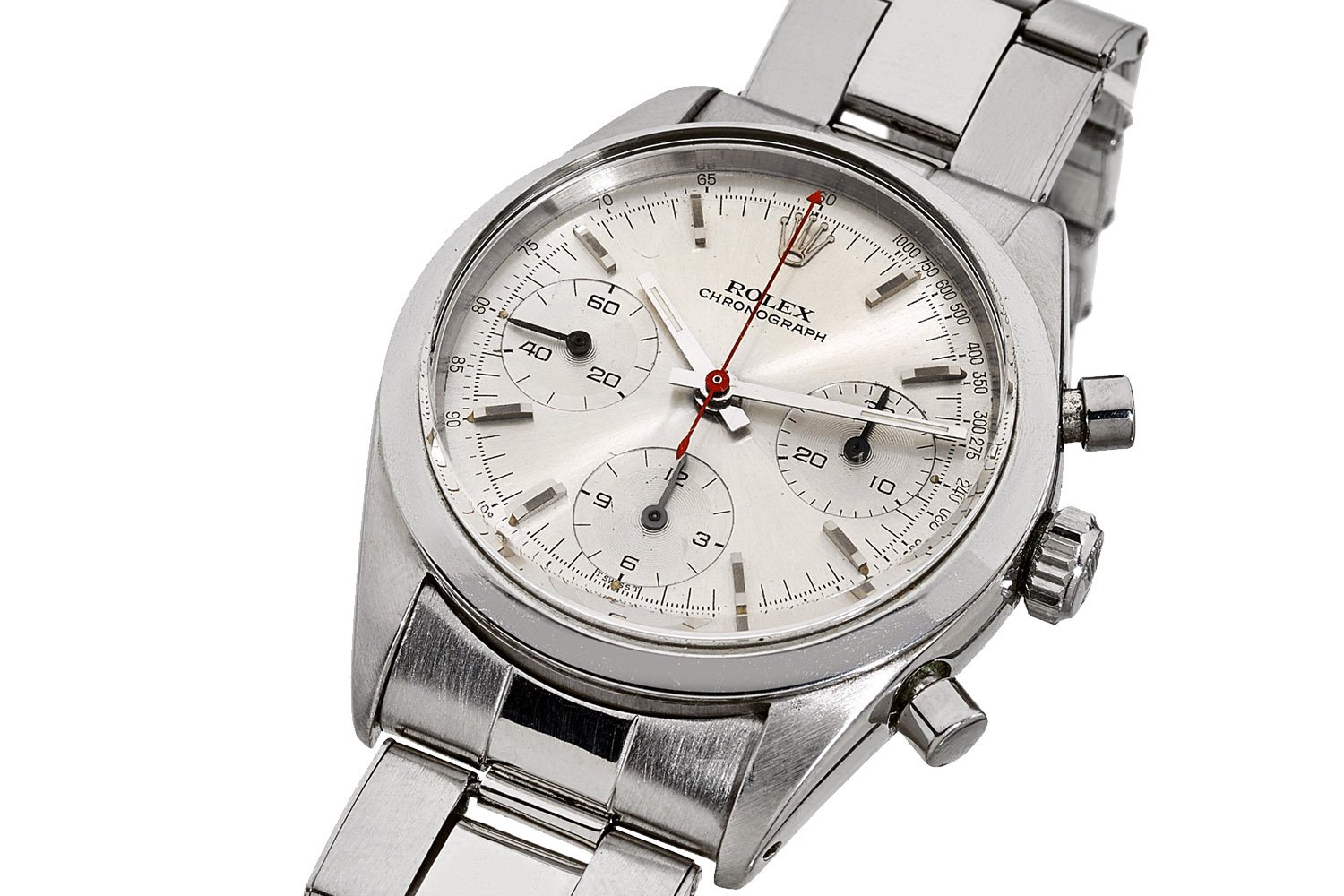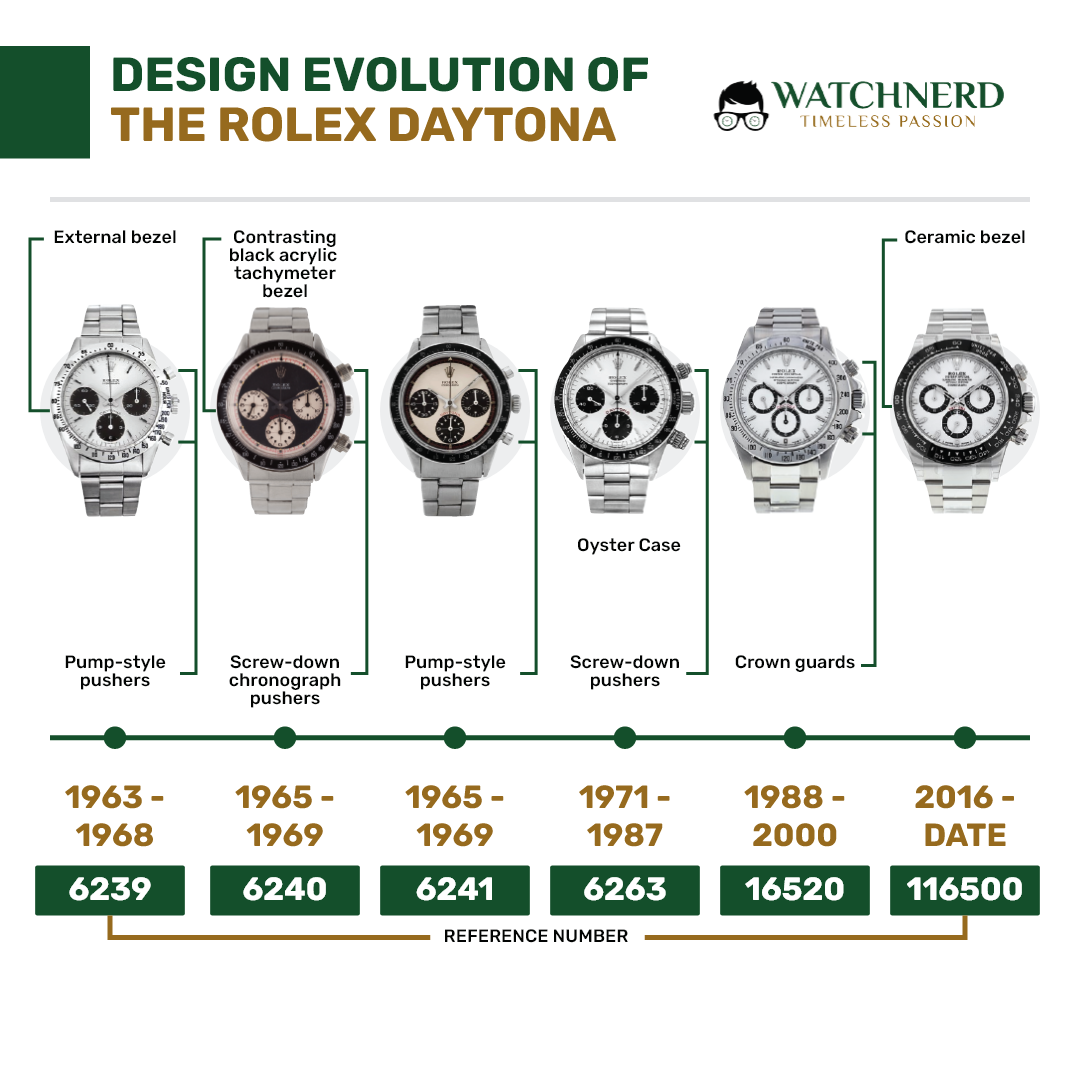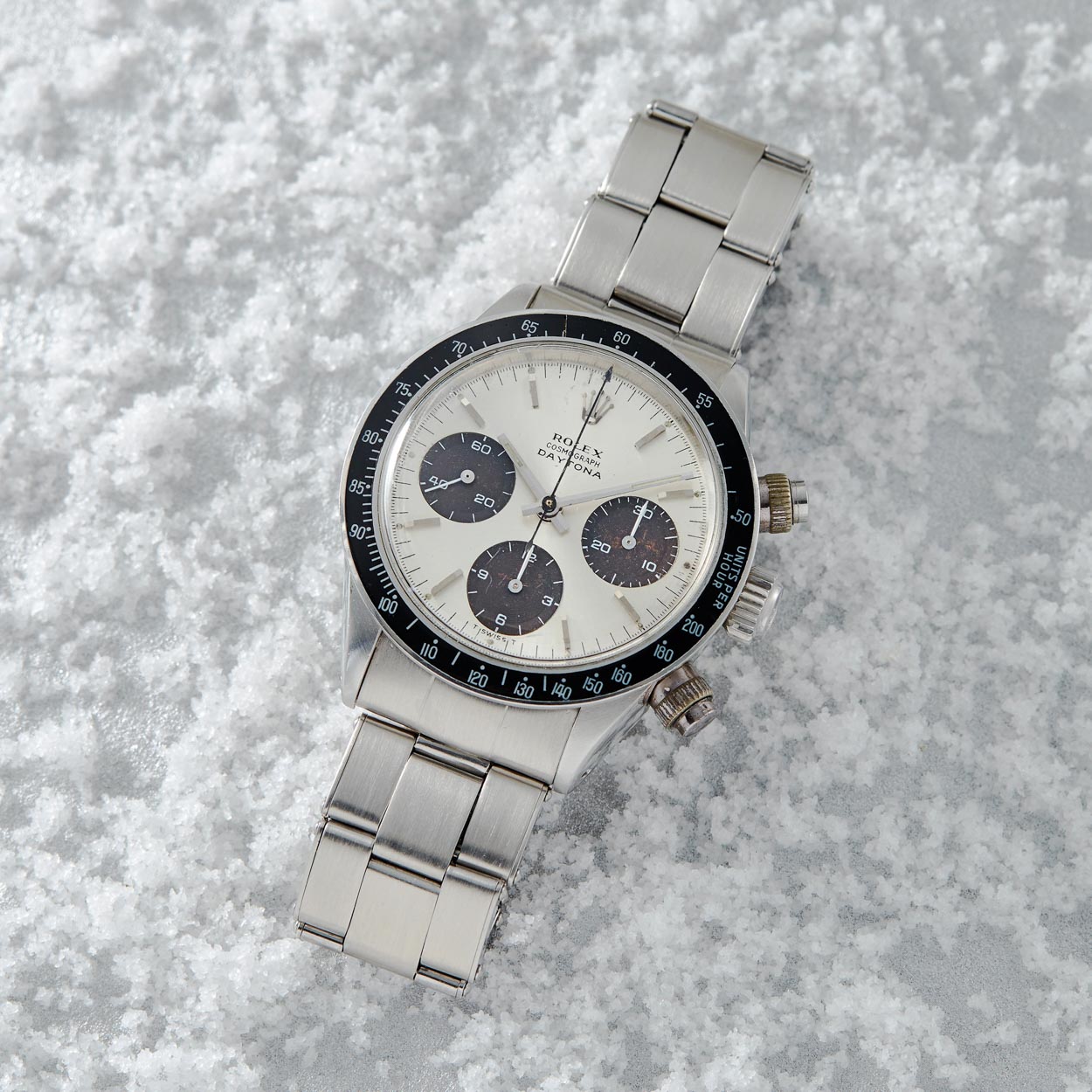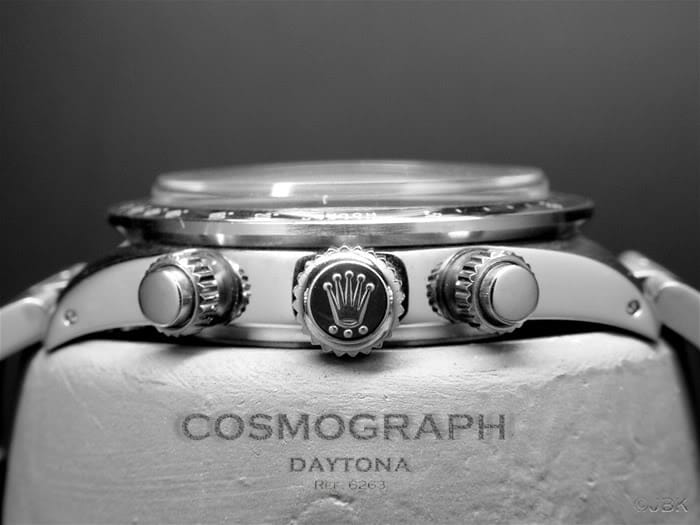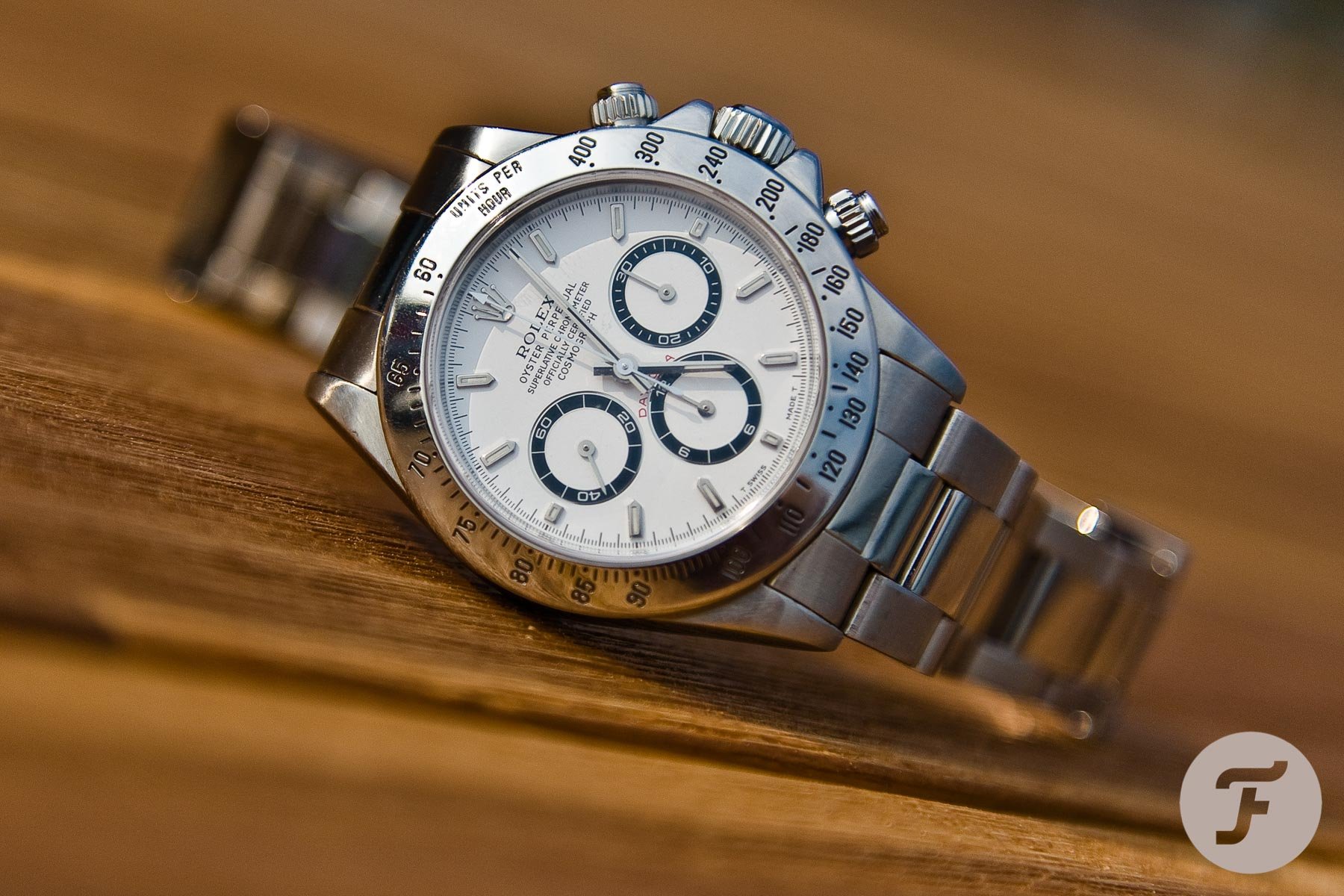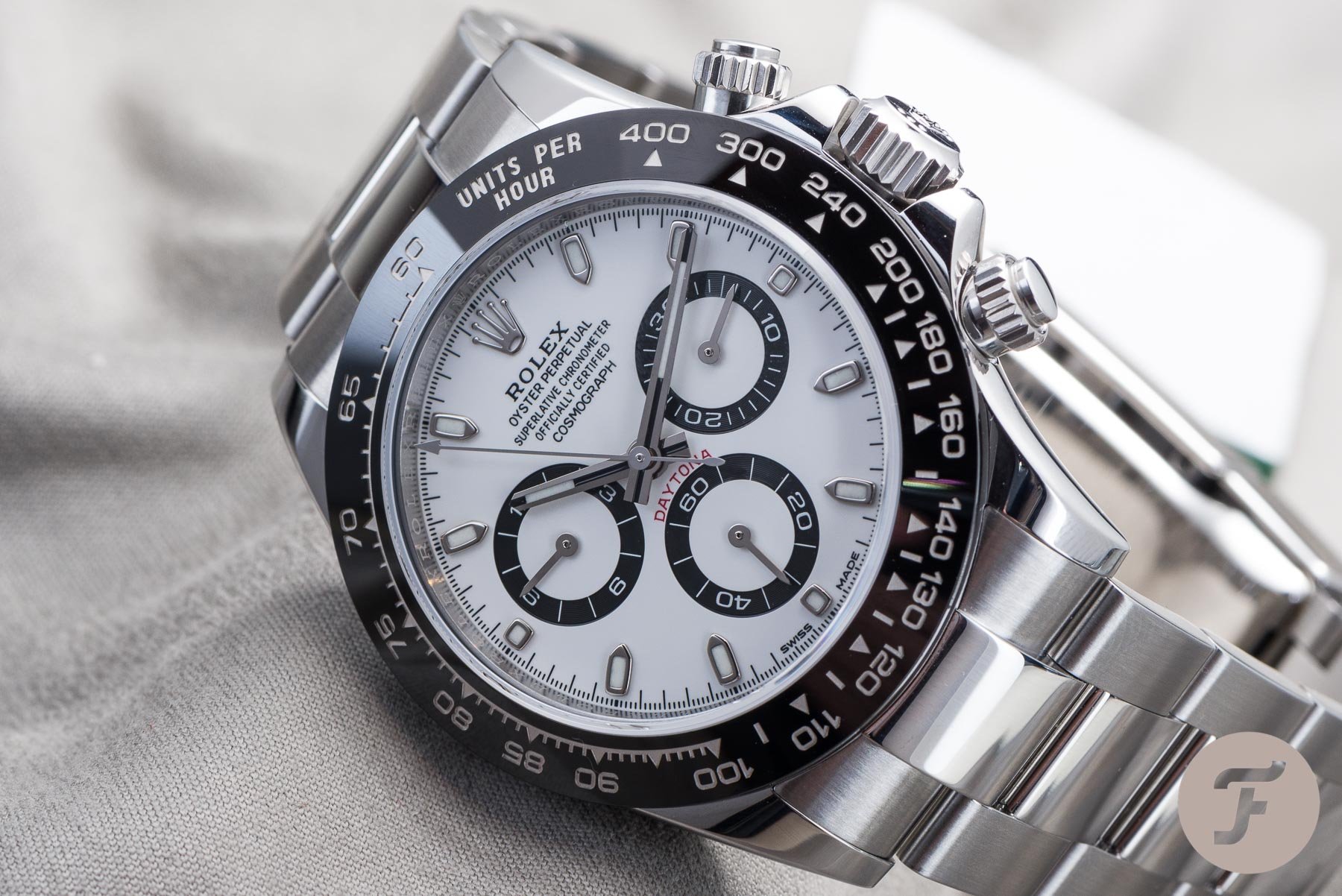How The Design Of The Rolex Cosmograph Daytona Came To Be
Last week, I shared my journey to owning the Rolex Cosmograph Daytona ref. 116520. This time I’m looking at the references of the illustrious Daytona’s history that came to shape the modern 116500. The newly re-named Oystersteel Rolex Daytona features five distinct design cues: A black Cerachrom bezel, screw-down chronograph pushers, crown guards, black sub-dial rings, and an Oyster case. But how did these elements gradually integrate into the steel Daytona? And which references form the basis of inspiration in its 60-year history?
Crucially for this article, I am predominantly discussing the design elements that mold the Daytona. I refer to the movements that power each reference, but only regarding how they affect the dial layouts and overall functionality. Therefore, this won’t be a deep dive into the mechanisms. This article will also solely focus on each reference’s stainless-steel variants and not the precious metal or bejeweled examples.
Pre-1963
Before we even get to the Daytona, we have the pre-Daytona Rolex chronographs. Essentially any Rolex chronograph before the Daytona is a pre-Daytona. But at least one reference receives the designation as the official forebear. In 1962, reference 6238 was a short-lived model in the range. But unlike the Daytona, the 6238 got some screen time in On Her Majesty’s Secret Service, as Jorg mentions here. What sets the ref. 6238 apart from everything that came afterward was the placement of the measurement scales.
Before 1963, Rolex chronographs were dressier with the outer part of the dial occupied by either a tachymeter or telemeter scale. Alternatively, the CK2915 Speedmaster by Omega since 1957 had an external tachymeter scale on the bezel. Whether or not the Speedmaster was the inspiration for later Rolex chronographs is up for debate — Rolex would certainly never admit to imitating a rival. But in 1963, the Daytona incorporated the external tachymeter scale into the inaugural Daytona reference 6239.
A guide to steel Daytona references
The above image, provided by WatchNerd.com, allows you to see the evolution leading up to reference 116500. The below breaks this down even further with each era of the stainless-steel Daytona. There is plenty of overlap and situations where predecessor cases in stock turnover were re-used for later references. A bit like the pirate’s code, as Barbossa would say, “its more like…guidelines, than actual rules.”
- 6239: 1963–1969
- 6240: 1965–1969
- 6241: 1966–1969
- 6262: 1970
- 6263: (1969 transitional) 1970–1988
- 6264: 1970–1972
- 6265: (1970 transitional) 1971–1988
- 16520: 1988–2000
- 116520: 2000–2016
- 116500 2016–Now
With the introduction to the reference guide out of the way, I will be cherry-picking specific models with design traits that shape the modern Daytona. Specifically, my selection will focus on the five distinct cues mentioned in the opening — namely, the bezel, the pushers, the crown guards, the dial, and the case.
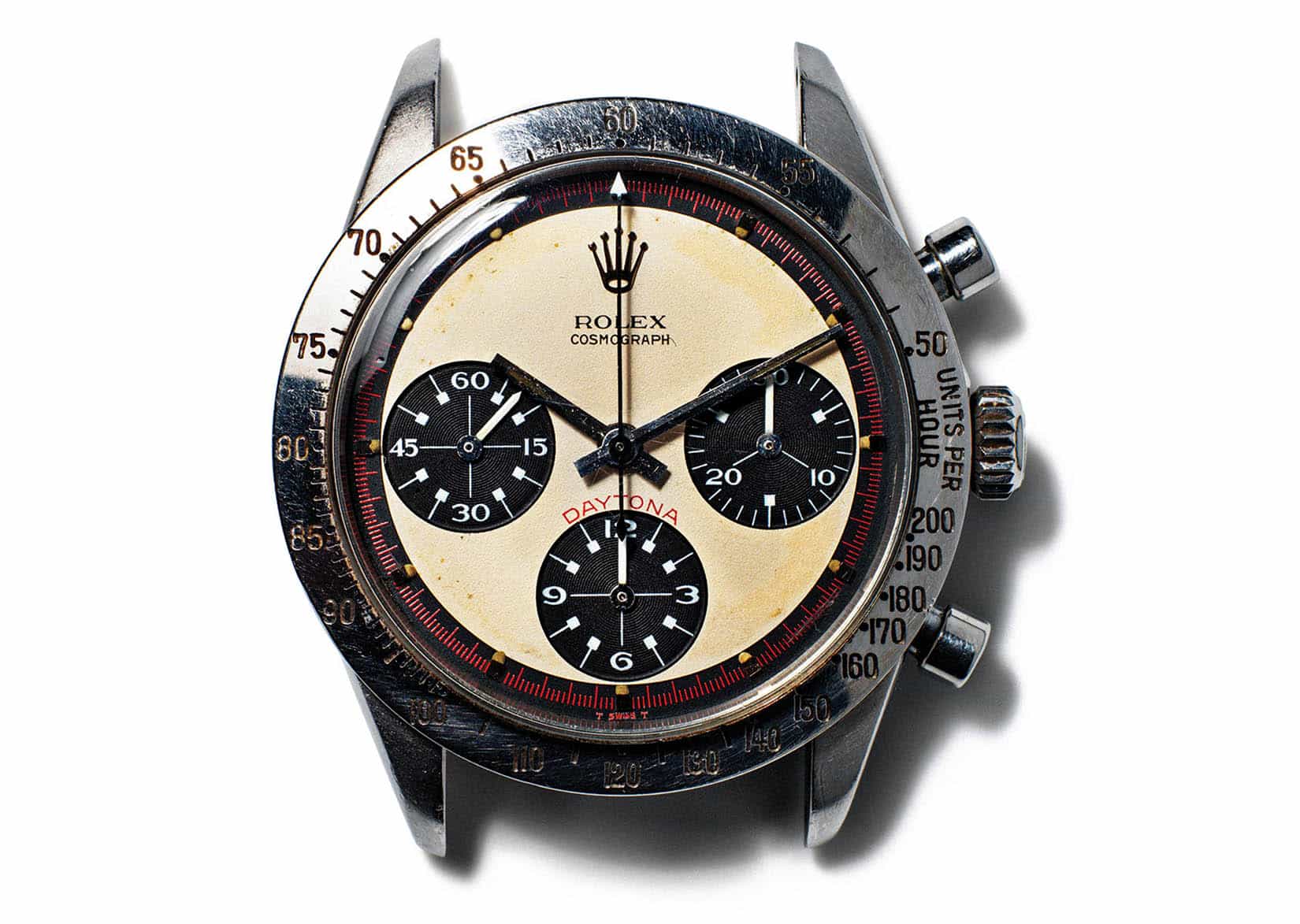
Rolex Daytona 6239 Paul Newman
External tachymeter bezel
Coming out in 1963, reference 6239 was the first in the line of the new Rolex Cosmograph. I say “Cosmograph” only at this point as the name “Daytona” was not settled on until later. Key features were the pump-style pushers and external bezel in stainless steel. In the mid-60s, Rolex followed up with the reference 6240, which included a contrasting black acrylic tachymeter bezel to aid legibility.
I find it interesting that Omega also opted for a white-on-black bezel in the late ’50s. Following the CK2915, reference CK2998 Speedmaster utilized an anodized aluminum bezel insert. My theory for the changes to both the Daytona and Speedmaster was the all-steel bezel with black numbering was not as legible under bright sunlight. However, apart from a few limited editions with steel bezels, the Omega Speedmaster Professional has mostly remained with the black aluminum bezel. In contrast, the Daytona alternates between steel, acrylic, aluminum, steel again, and most recently, Cerachrom.
In the modern Oystersteel Daytonas, the black Cerachrom bezel has undoubtedly offered more wrist presence and legibility than the outgoing steel bezel in reference 116520. The design has the ref. 6240 to thank for this. No wonder Rob included the 6240 in his list of the best Rolex watches ever.
Screw-down chronograph pushers
The 6240 was a short-lived reference, making it highly sought after, but included another iconic feature of the Daytona; screw-down chronograph pushers. These pushers prevented the chronograph from being activated accidentally and increased water-resistance. But the subsequent reference 6241 promptly returned the pump-style chronograph pushers of the earlier 6239. It wasn’t until reference 6263 from the early ’70s that screw-down pushers became the norm for the Rolex Daytona.
Screw-down pushers carry forward right up to the present day. Unsurprisingly, they remain a contentious function of the Daytona. Many feel it is unnecessary and frustrating to unscrew when timing an event at short notice. However, I think it complements the Daytona’s solid look and feel. As such, I don’t imagine them being replaced any time soon.
I’m giving the inspiration of screw chronograph pushers to the 6263 as this was the reference in which they stayed the course.
The Oyster case
Breitling, Heuer, and even Seiko predated the Rolex by introducing the first mechanical chronograph movements with automatic winding, coincidentally, all in 1969. Simultaneously, the Daytona was still using the manually-wound Valjoux 72 movement, which Rolex dubbed the Calibre 722 and later the Calibre 727 with the release of the reference 6263. The 6263 also introduced the Oyster case as Rolex consolidated their professional collection with increased waterproofness.
Another win for the 6263 with the Oyster case continuing to provide a depth rating of 100 meters in the modern model.
Crown guards and black sub-dial rings
It would be nearly two decades from 1969 that Rolex would release a Daytona with an automatic movement in 1988. Without an in-house caliber to hand, Rolex sourced the El Primero movement from Zenith, who was also one of the first brands to design an automatic chronograph caliber in 1969. Rolex reduced the high frequency of 5hz to 4hz to extend service intervals. With the automatic winding came a beefed-up case from 37mm to 40mm aligning to the de facto gentleman’s case size for a sports Rolex. The Daytona also grew crown guards to protect the proud pushers and crown.
Another lasting feature was the black sub-dial surrounding the chronograph minutes, hours, and the running seconds at 9 o’clock. The reference 116520 in 2000 reverted to silver sub-dial rings in both the white and black dial variants. 2016 saw the 116500 re-introduce the black dial sub-dials for only the white dial version. However, the rings were a tad thicker in the 116500 compared to the 16520.
The reference 16520 is given props for inspiring the beefy case of the 116500 with crown guards and black sub-dial rings. Swapping the El Primero movement to the in-house caliber 4130 shifted the sub-dials north of the center pinion. In tandem, the running seconds changed position to 6 o’clock from 9 o’clock.
The modern Daytona with Cerachrom bezel
Just looking at reference 16520, you can start to see the resemblance to the current Daytona. In 2016, the Rolex Daytona’s steel bezel was replaced with the scratch-resistant Cerachrom bezel in black, which harks back to the contrasting bezel of reference 6240 50-years earlier. The 904L stainless-steel material also became known as Oystersteel in 2016 with high corrosion resistance and a case that polishes beautifully.
The evolution of the Daytona, like many Rolexes, is a slow yet deliberate exercise in restraint and gentle improvements without deviating from the core function. These subtle variations in the references discussed above lead us to the modern Rolex Cosmograph Daytona reference 116500, an icon of modern luxury sports watches. With its black Cerachrom bezel, screw-down chronograph pushers, crown guards, black sub-dial rings, and an Oyster case, the reference 116500 took nearly 60-years to perfect its design.

